East SIG Report April 2021
20th May 2021
Neil Muller
Host Paul Woolard opened the April meeting again presented via Zoom. After welcoming members, the meeting commenced with George Skarbek presenting Q&A.
Q: I have a problem with printing. I’ve done all the maintenance tasks on the printer and the printers test page prints perfectly. When I open and attempt to print a pdf file from Adobe Acrobat, I only get the top half of every line of text. The print preview does not show up any problems. Any graphics are not affected and print in full. I’ve uninstalled and reinstalled Acrobat but still have the same problem. Do you have any suggestions that could help?
A: I would try a different Pdf viewer and see if you can print from that. George then asked the audience if anyone has encountered similar behaviour. One member had a similar problem when one line covered another, both on the screen and on the print. He was often able to correct this by altering the magnification of the screen. Another member suggested before doing a print you look at print preview and fiddle with the size of the file on the paper. The consensus from the audience was to try another pdf viewer such as Foxit.
[Reply from questioner] As images are printing correctly, I’ve taken a screen copy of the pdf and plan to see whether that image will print correctly.
[George] If you need to print large pdf files, there are many free sites on the web that you can upload your pdf to and it will be converted to Word. By and large they do a very good to excellent job. Some have a limit to the size of the original pdf file.
Q: I have a problem with photoshop. When I try to do anything, I get a message “Can’t repeat your request due to a program error”. I’ve uninstalled and reinstalled Photoshop but that didn’t solve the problem. A Google search shows others have this same problem but no suggestions worked. The problem only occurred a few days ago when I updated photoshop.
A: The cause is most likely due to the update. I get Photoshop updates almost weekly, so I’d wait a few days in the hope others are experiencing the same problem and Adobe will send out a new update to correct the problem.
[John Hall] You could try using System Restore to roll back pre the update, given the problem only occurred a few days ago.
Q: Given that Adobe Flash is no longer supported and is being removed from our computers, what programs use Flash, and what will we expect to see malfunction? What will be the effect of not having Flash anymore?
A: Flash is no longer supported and by uninstalling it you’ll notice no difference whatsoever. Flash was introduced a very long time ago [by Macromedia] for rendering animations in web browsers. Since then, HTML code and browser functionality has evolved with many new features which have made Flash obsolete.
[Note: Up until the last year, many online photobook creation websites used Flash. These sites are now using HTML instead]

Figure 1 – Flash & Java Logos
Q: Is Flash the same as Java? I got rid of Java and I’ve noticed no difference.
A: Java is different from Flash and it’s still being used fairly extensively. Some older programs may still use Java but if you’ve noticed no difference then you don’t have a problem. Java is still used in a lot of embedded devices but on computers it’s been phased out to a large extent, because it still has vulnerabilities. Java is basically an interpretive compiler.
Dave Botherway followed with his ongoing series on “Making more use of Zoom”, this time using remote control. When screen sharing in Zoom, the person sharing their screen has an extra icon on their tool bar called “Remote Control”.
![]()
Figure 2 – Remote Control icon
When the “Remote Control” icon is selected on the persons screen that is being shared, the following options shown in Figure 3 are available:
- Auto accept all requests (i.e. others can request taking control of the shared screen)
- Share clipboard (i.e. share the clipboard with others)
- Give Mouse /Keyboard Control to: (i.e. gives control to anyone from the participant list)
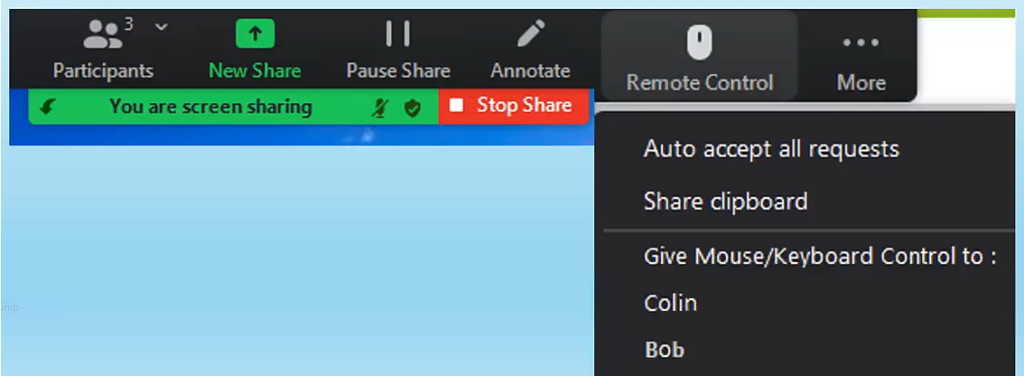
Figure 3 – Remote Control options on the sharer’s screen.
Alternatively, other participants can request control of the screen being shared.
In the example below, participant Bob is currently viewing Dave’s shared screen. Bob wishes to take “Remote Control” of Dave’s screen. To do this he selects “View Options” then clicks “Request Remote Control”. When Bob clicks “Request Remote Control” a window opens. Bob then confirms he wants to take remote control of Dave’s screen by selecting “Request”. Dave will then see a window open on his screen that Bob wants to take control, and he accepts this request by clicking “Approved”. Bob can now manipulate Dave’s mouse and take control of the screen.
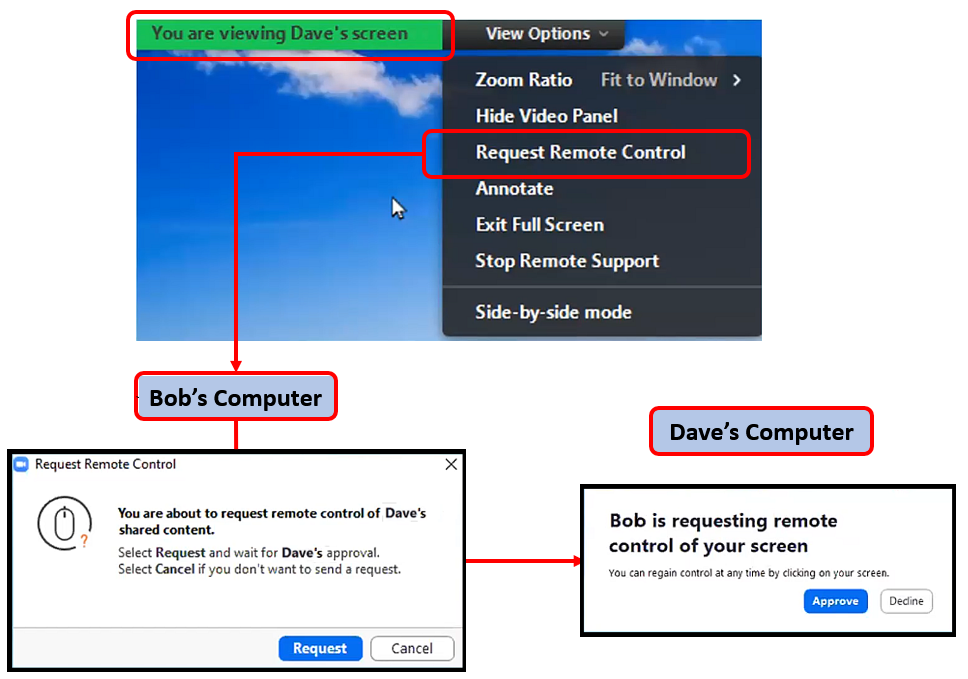
Figure 4 – Requesting “Remote Control” menu & screens
To summarise “Remote Control”, the participant sharing their screen can give remote control to another (as shown in Figure 3), or another participant can request remote control of the participants screen being shared (as shown in Figure 4). Once permission is given, you control the mouse and keyboard and even copy text from the shared screen to yours.
At the conclusion of the presentation, Dave demonstrated remote control by using the mouse to open a and type text into a program on a screen being shared by another. An alternative to Zoom “Remote Control” is Microsoft “Quick Assist”. This will be a topic for a presentation at next month’s meeting.
Following Dave’s presentation, Trevor Hudson played 2 videos he’s uploaded to YouTube. The first was the latest of a series of Trevor’s magic tricks, this one titled “Trevor’s Magic Moving Coin”. This video can be found at https://www.youtube.com/watch?v=OFoQ59zF730 . In the comments section below the YouTube video, is a list of Trevor’s previous magic videos.
Trevor’s second video was titled “How to Convert HEIC to JPG”. HEIC (High Efficiency Image Container) is a new file format for saving digital photographs. Images saved in HEIC have smaller files sizes and can have higher image quality than JPEG images. The major benefit of HEIC over JPG’s, is that the smaller file size of HEIC allows more images to be stored on a camera’s memory card or a phones internal memory.
HEIC is a relatively new image format, so not all current programs are able to view or read HEIC images. As a consequence, it is necessary to convert to the more common JPG format if you wish to edit an HEIC image. To view HEIC images in Windows 10, a free “HEIC Image Extension” is available from the Microsoft Store. After installing this add-on, clicking on an HEIC image opens that image in the Windows Photos app. Trevor notes that this extension allows you to view, but not convert the HEIC images to other formats.
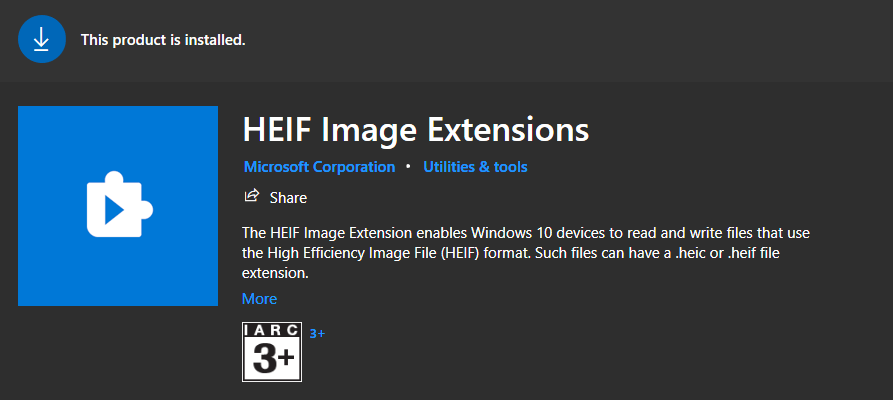
Figure 5 – Microsoft HEIF Image Extensions
In addition to installing the Microsoft add-on, Trevor suggests downloading the “iMazing HEIC Converter” from https://imazing.com/heic/download. This program converts HEIC image files to JPG at varying image qualities or to PNG format. Trevor then demonstrated the use of this program by converting single and multiple HEIC images to PNG and JPG. This is done by dragging the HEIC image file from File Explorer into the “iMazing HEIC Converter”. Trevor’s video can be viewed on YouTube at https://www.youtube.com/watch?v=cH_AgsStrwk.
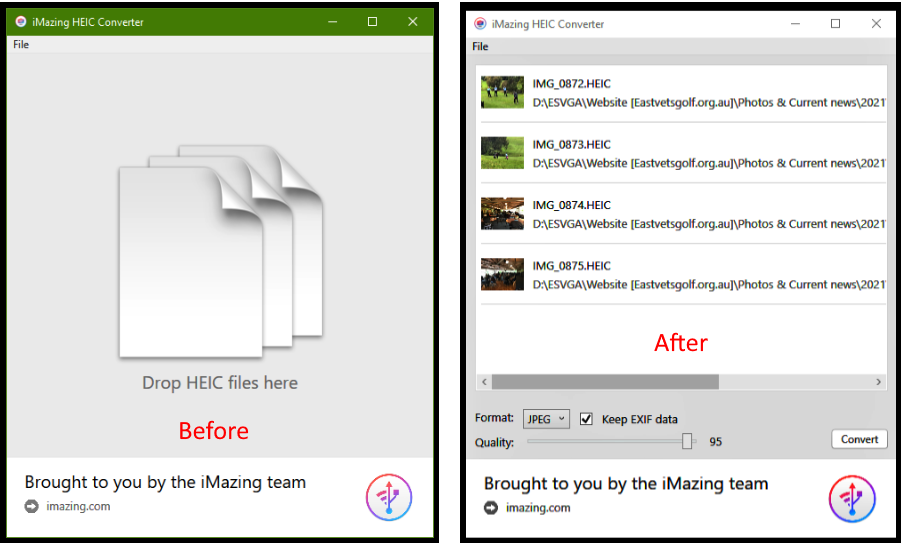
Figure 6 – Before and After dragging files into “iMazing HEIC Converter”
Questions and comments from audience members followed Trevor’s presentation. It was mentioned that the latest versions of Faststone Viewer, Irfanview and GIMP will open and convert HEIC images. When the Microsoft HEIF extension is installed XnView can view HEIC images but not convert them to JPG. Both new Apple iPhones and Google Pixel phones save images in HEIC, while Samsung phones currently don’t.
Over the last two months, Dave Botherway has run Zoom polls to help determine the future format of East SIG Meetings. Previous polls showed there was an even split between those who preferred Zoom meetings to those who favour face to face meetings. Since the last poll, John Swale has been testing hybrid meeting at both Wadham House and at Heidelberg for the North East SIG. Although in the early-stage of testing, hybrid meetings appear a distinct possibility at venues this year other than Moorabbin. A new 2 questions poll which including an hybrid option was taken. Results were:
- Question 1
- 77% would attend face to face meeting if Zoom wasn’t available.
- 20% would not be able to attend face to face meetings
- Question 2
- 40% would attend face to face meeting if a hybrid Zoom meetings was available.
- 60% would use Zoom if a hybrid meeting was available.
Prior to a break in proceedings, Dave Botherway summarised the presentation he gave last month on Zoom Breakout Rooms. Dave then opened Breakout Rooms to audience members who had 15 minutes to attend one of four breakout rooms.
The main session of the night was George Skarbek demonstrating a set of free utilities from Microsoft called “PowerToys”. “PowerToys” are designed for Windows power users to add new features that maximise productivity in Windows. They have been designed by MS Windows and Office programmers and are available for Windows XP, Windows 95 and Windows 10. At the time of writing the current version for Windows 10 is 0.35.0.
“PowerToys” can be downloaded from the Microsoft Store or GitHub. Some of the utilities within PowerToys are accessed from the right click context menu in File Explorer, while others are accessed from the PowerToys icon in the notification area on the Windows 10 taskbar.

Figure 7 – PowerToys Icon
George then listed the various utilities within PowerToys and demonstrated those he finds most useful.
- ColorPicker – This is an eye dropper tool similar to that found in Photoshop. When selecting a colour on your computer screen, a window displays the colour code in both hex and RGB for that colour. This can be useful when wanting to use that colour in another program.
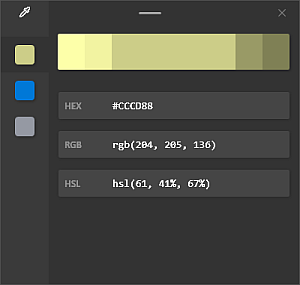
Figure 8 – PowerToys Color Picker
- FancyZones – This tool is a Windows manager that lets you create layouts or “zones” for windows on your desktop. Windows 10 already lets you snap open windows in a side-by-side orientation or in a four-window grid. FancyZones lets you create more complex layouts in varying orientations.
- File Explorer – The preview pane in File Explorer displays the contents of a file, without having to open the file in a program. With PowerToys comes the ability to view .svg (scalable vector graphics) icon images and documents formatted in Markdown in the preview pane.
- Image Resizer – This is a Windows shell extension that allows you to quickly resize images. Simply right-click on a single or on multiple image files in File Explorer and select “Resize Picture” from the context menu. There are 4 pre-determined resize options to choose from, or you can input your own size. Further options are available via 3 checkboxes as seen in Figure 9. This tool is very useful if you need to send photos via email and the original files aren’t required. It can also save a huge amount of disk space and was one of the PowerToys George demonstrated.
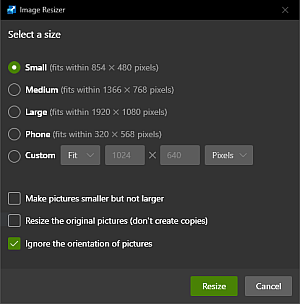
Figure 9 – PowerToys Resize Picture
- Keyboard Manager – This utility contains 2 tools, “Remap Keyboard” and “Remap Shortcuts”. The “Remap Keyboard” tool lets you change a single key to a new key on the keyboard. An example would be to remap the unused tilde key ( ~ ) to a pound symbol. The “Remap Shortcuts” tool lets you change multiple-key shortcuts into other shortcuts.
- PowerToys Run – This is a text-based program launcher. It runs by pressing Alt + Spacebar followed by typing the first few letters of the name of a program. Programs starting with those letters start to appear from which you can then select the program you wish to open from a list. Rather than going through your “Program List” to run a program, this key combination enables programs to open from the keyboard. This utility is only available in later versions of Windows version 1903 or later.
- Power Rename –From File Explorer, right-click on the files you wish to rename to bring up the context menu and select “PowerRename”. A window then opens giving numerous text and check boxes to batch rename files. This is another useful utility that George demonstrated.
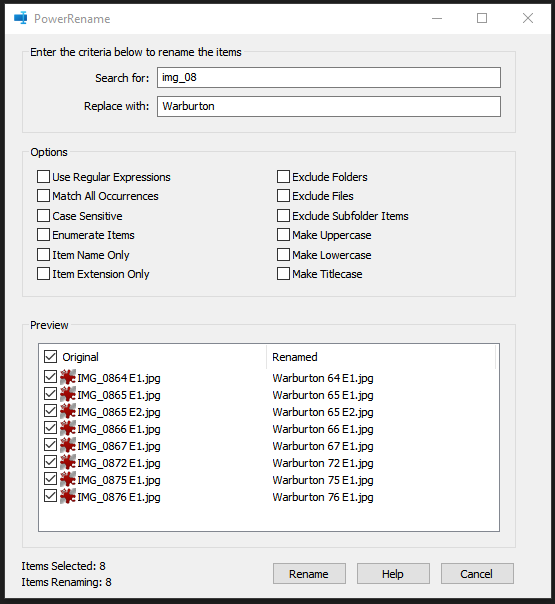
Figure 10 – PowerToys, PowerRename.
- Shortcut Guide –The “Shortcut Guide” appears as an overlay on the screen when the Windows key is held down for more than 1 second. It disappears when the Windows key is released. The purpose of the guide is to aid the remembering of Windows key and other keyboard shortcuts available in Windows 10. Along with the numerous Windows key shortcuts is a guide for snapping windows to various parts of the screen and the quick access to programs on the taskbar using the Windows key and numbers 1 through 9. This is another useful feature that George demonstrated.
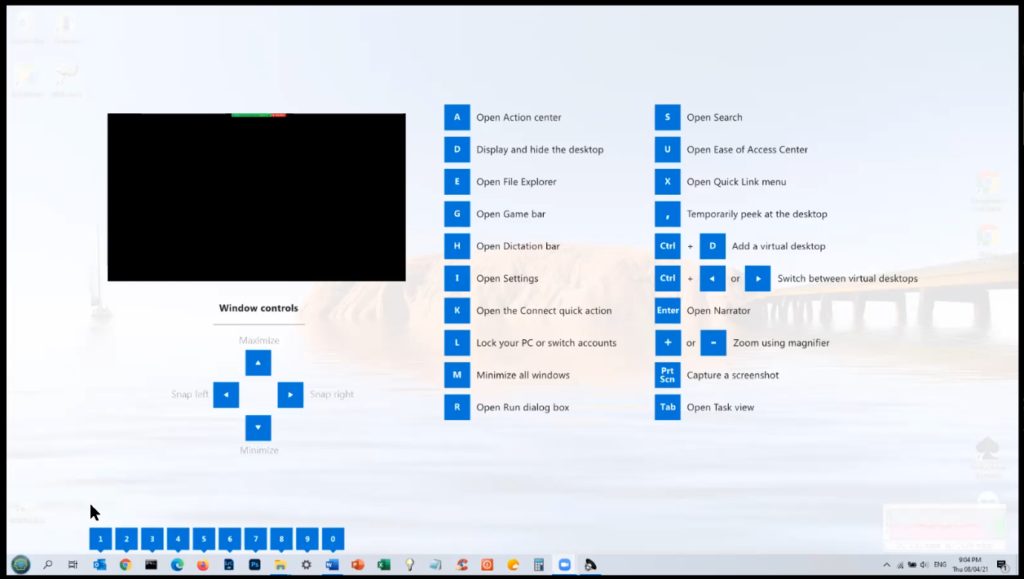
Figure 11 – PowerToys, Shortcut Guide.
The meeting concluded with informal discussions between audience members.



Recent Comments